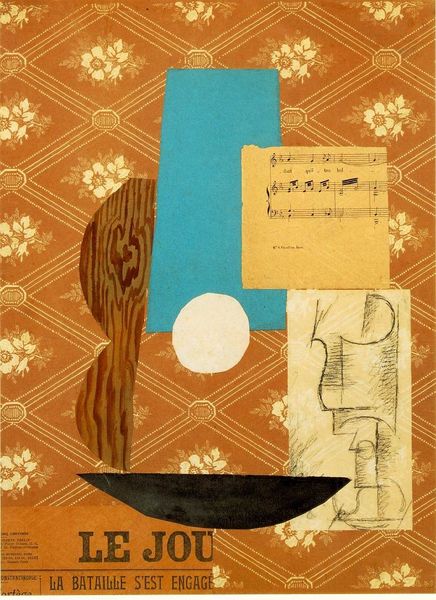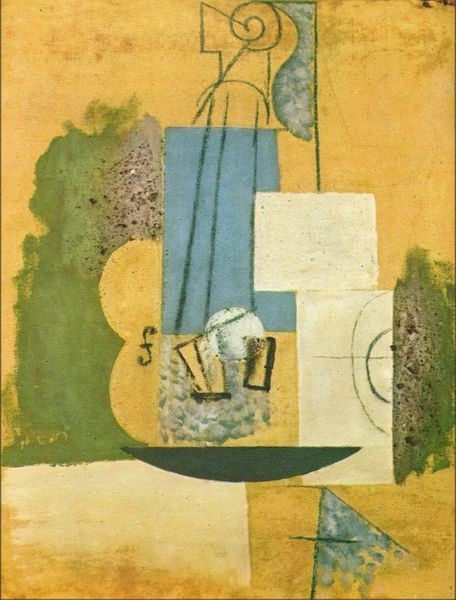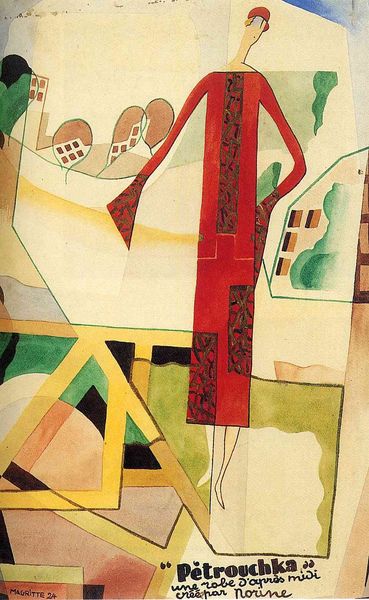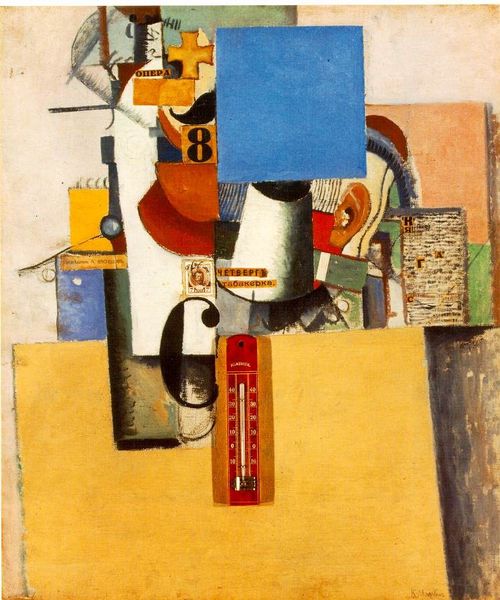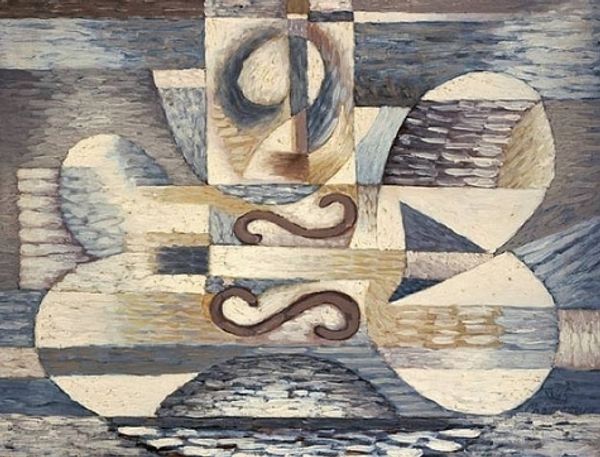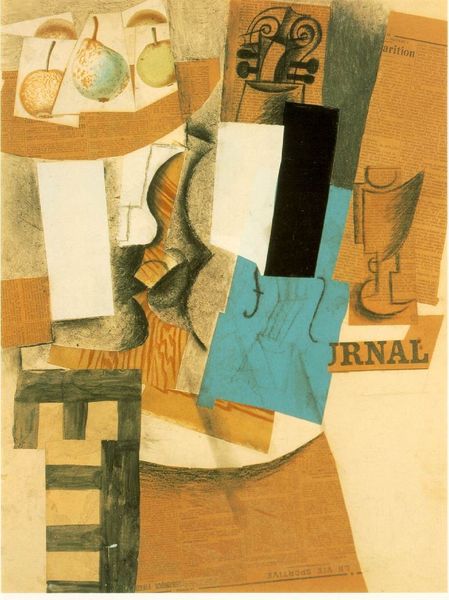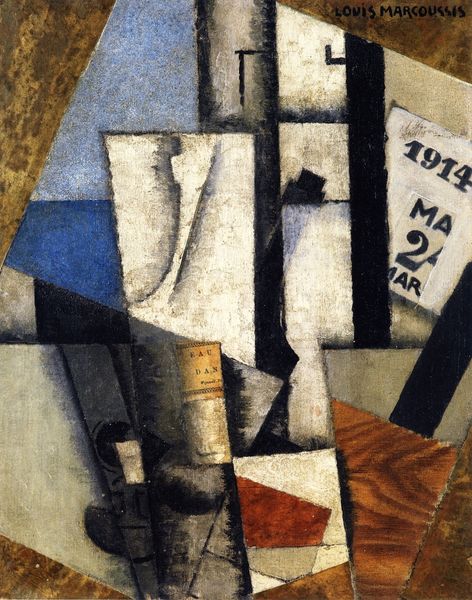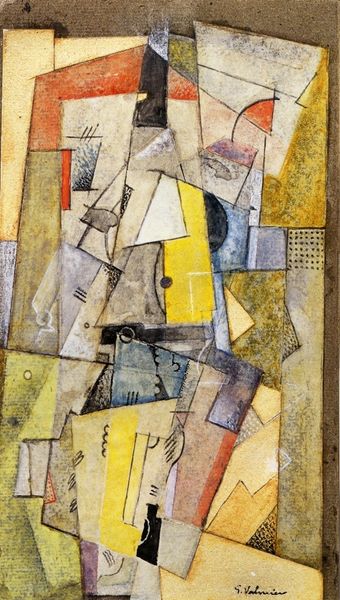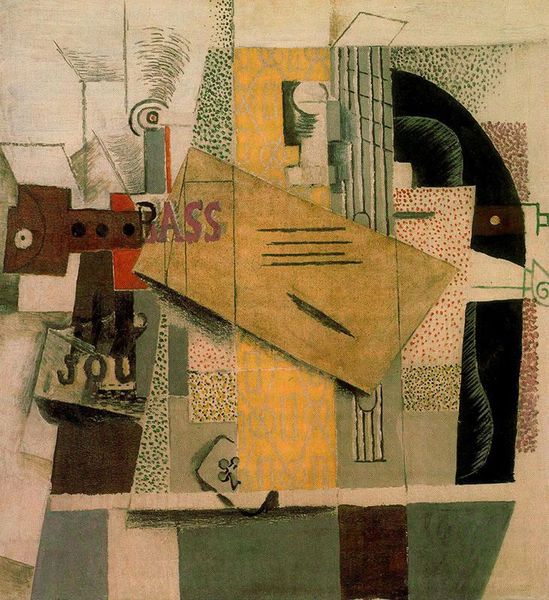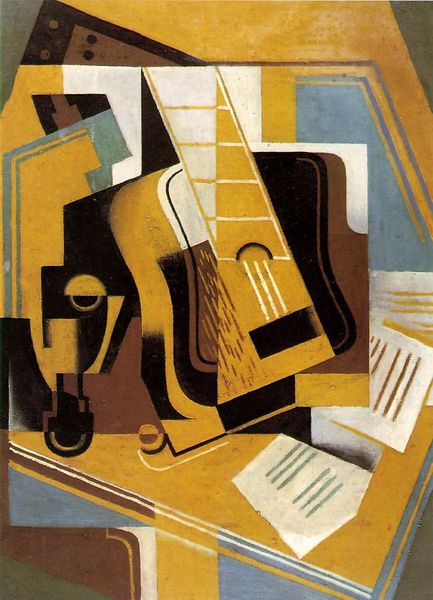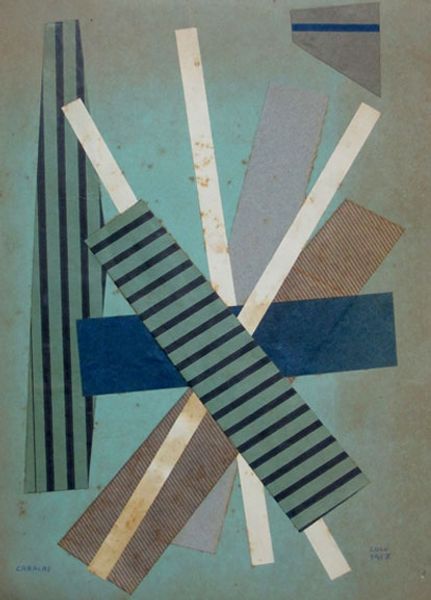
mixed-media, collage, painting, print, paper
#
cubism
#
mixed-media
#
collage
#
painting
# print
#
paper
#
geometric
#
abstraction
#
line
#
mixed media
Dimensions: 66.4 x 49.6 cm
Copyright: Public domain US
Curator: Picasso’s "The Guitar," created in 1913 and residing here at MoMA, utilizes a striking array of mixed media to challenge our very perception of form. The collage combines painting, print, and paper to depict its subject. Editor: I’m struck immediately by how tactile it feels. It’s almost aggressive in its dismantling of the instrument. Is this joy or destruction we are witnessing? Curator: Perhaps it’s both. Remember that Picasso was deeply engaged in debates about representation, modernism and its discontents. He's not simply depicting a guitar. He is actively breaking it down. And, as a Spaniard working in France, questions of cultural representation were undoubtedly front of mind. This deconstruction allows him to create something wholly new while also alluding to social realities and challenging art’s inherent power structures. Editor: The pasted elements – newsprint and decorative wallpaper - further push against the boundary between the artwork and everyday experience. He’s democratizing the materials, pulling what's deemed “low” culture into high art spaces, a reflection perhaps of a shifting social landscape as labor became increasingly specialized and commodities widely accessible? Curator: Exactly. He is bringing the concerns of the streets into the gallery, creating a dialogue. The newsprint isn’t arbitrary, either; consider its commentary on contemporary events. Also, what does it mean for an instrument so deeply embedded in musical and artistic culture to be treated like this? Is it reverence or irreverence? Editor: Looking closer, I'm seeing something. The use of mixed media speaks directly to artistic production: the labor of cutting, pasting, painting, printing, it becomes integral to the experience and subject of the artwork itself. There is so much process showing! Curator: By embracing collage, Picasso moves past illusionism, and closer to concrete forms, laying bare his materials in what many see as an explicitly modernist act. We can explore the shifting cultural contexts through a combined intersectional reading of gender, race, and class and his artistic intentions. Editor: So, what feels at first like destructive fragmentation ends up revealing something very vital about not only art, but its production, materials, and function within society itself. Curator: Indeed, viewing this seminal work requires constant questioning, which ensures it continues to provoke, challenge, and enlighten us about the role art has in dismantling and reassembling meaning.
Comments
No comments
Be the first to comment and join the conversation on the ultimate creative platform.
